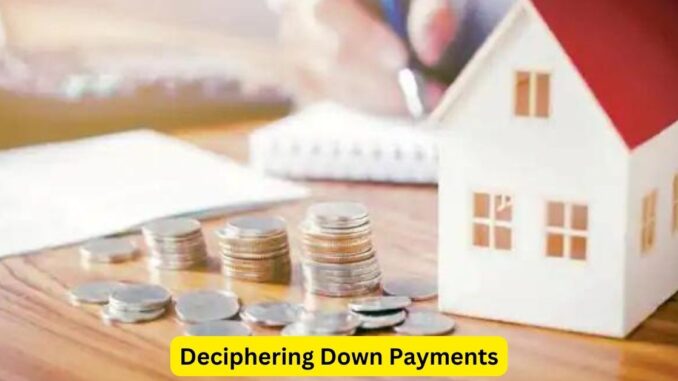
Selecting the right down payment is a critical step in the home-buying process. It shapes your upfront costs, monthly payments, and overall financial health. Here’s a comprehensive guide to help you navigate this crucial decision:
Understanding Down Payments: A down payment is a portion of the home’s purchase price paid upfront. It’s a key determinant in securing a mortgage and influences various aspects of your home loan.
Factors Influencing Down Payment Amounts:
- Lender Requirements: Different loan types have varying down payment thresholds. Conventional loans might require 3% to 20%, while some government-backed loans allow lower down payments, such as FHA loans requiring as little as 3.5% down.
- Financial Situation: Consider your savings, income stability, and existing debts when determining a feasible down payment. A larger down payment can lower monthly payments and interest rates but might strain your finances initially.
- Market Conditions: In competitive housing markets, a larger down payment might strengthen your offer, especially in multiple-offer scenarios.
- Personal Preferences: Assess your comfort level. A higher down payment might provide financial security but could tie up substantial funds.
Advantages of Various Down Payment Amounts:
- Low Down Payment (3%-5%): Allows for more immediate homeownership, requiring less upfront cash. Ideal for those with limited savings or aiming to enter the market swiftly.
- Mid-Range (10%-15%): Balances upfront costs with lower long-term payments and interest rates. Offers a compromise between affordability and reduced borrowing.
- High Down Payment (20% or more): Often eliminates the need for private mortgage insurance (PMI) and can secure better loan terms. Demonstrates strong financial capability to lenders.
Considerations Beyond the Down Payment:
- Closing Costs: Allocate funds for closing costs, typically 2% to 5% of the home’s purchase price, which covers various fees and expenses associated with the home purchase.
- Emergency Fund: Don’t exhaust savings entirely on the down payment. Maintain an emergency fund for unexpected repairs or financial setbacks post-purchase.
Making the Right Choice:
- Evaluate Financial Health: Assess your financial situation objectively. Consider your long-term financial goals, job stability, and the impact of a larger down payment on your overall financial health.
- Consult Mortgage Professionals: Seek advice from mortgage specialists or financial advisors. They can provide personalized insights and help align your down payment choice with your broader financial objectives.
Flexibility and Readiness: Remember, the ‘right’ down payment varies for each individual. Assess your comfort level, financial readiness, and future goals to make an informed decision. Striking a balance between a reasonable down payment and maintaining a healthy financial cushion is key.
Choosing the right down payment is a pivotal step in your homeownership journey. By weighing your options, considering your financial circumstances, and seeking expert guidance, you can confidently make a decision that aligns with your aspirations and secures a stable foundation for your future home.
Leave a Reply